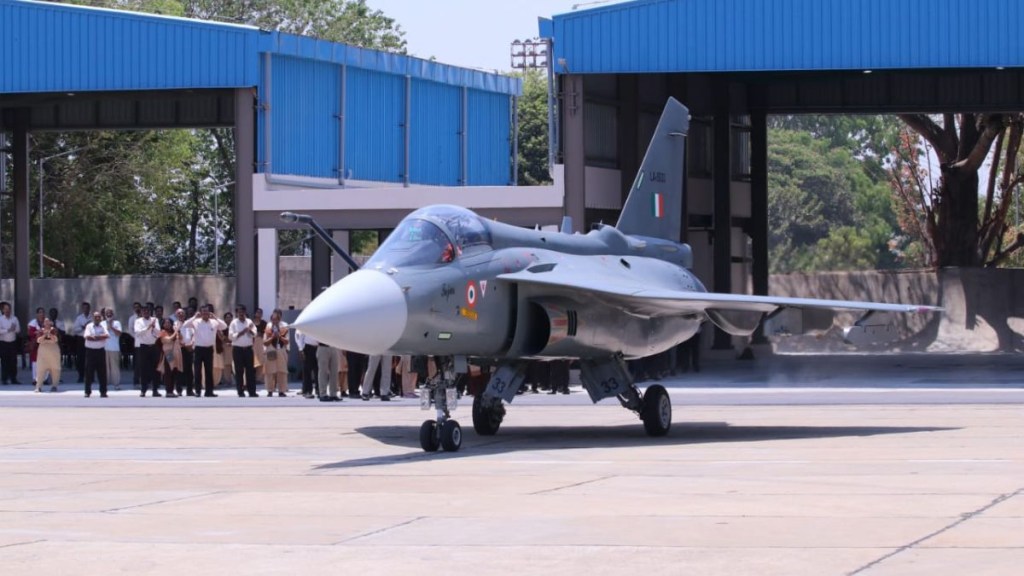India’s ambitious Tejas Mark-1A program has hit a significant delay, due to delays in engine supplies from US based General Electric (GE). Hindustan Aeronautics Limited (HAL) will be able to deliver only two Tejas Mark-1A jets this fiscal year, a stark shortfall from the planned 18, owing to supply chain disruptions with the engine provider GE. This setback threatens the IAF’s operational strength as it strives to bridge a critical gap in its fighter jet fleet.
Supply Chain Bottlenecks at GE
Mark-1A jets. Facing issues within its own supplier network, GE currently has only two engines available, which limits HAL to producing just two jets by March 2025, well below the expected output. Sources indicate that India will receive these two engines, enabling HAL to deliver the same number of jets.
While the Ministry of Defence (MoD) and HAL are prepared to ramp up production to 24 jets annually from the next fiscal year, this plan hinges on GE’s ability to resolve its supply chain challenges. The US government has assured India, reportedly through National Security Advisor Jake Sullivan, of GE’s commitment to stabilize the engine supply. Furthermore, the recent Security of Supply Arrangement, signed between India and the United States, includes provisions allowing both nations access to each other’s industrial resources in case of future supply disruptions. A statement from the US Department of Defence emphasizes that this arrangement is intended to “resolve unanticipated supply chain disruptions to meet national security needs.”
Impact on IAF’s Combat Readiness
For the IAF, this delay exacerbates an already pressing issue: the shortage of fighter squadrons needed to address potential two-front threats from Pakistan and China. Currently operating with 31 squadrons, the IAF is short of the 42 squadrons deemed essential for effective defence. Each squadron generally comprises 16 to 18 aircraft, so the gap significantly impacts India’s defence posture.
The Tejas Mark-1A, an advanced version of the Mark-1 already in service, was intended to help close this gap. With the first 83 jets ordered in February 2021 under a Rs 48,000-crore contract, HAL was expected to commence deliveries by March 2024. Yet, HAL has not met this target due to the dependency on GE’s engines, leaving the IAF short of critical assets.
The IAF’s urgency is compounded by the scheduled phase-out of aging Soviet-era jets. Over the next year, two squadrons of MiG-21 fighter jets are slated for retirement, followed by gradual retirements of Jaguar, MiG-29, and Mirage 2000 fleets starting in 2029. Together, these fleets represent approximately 250 jets currently operating on extended life cycles. The IAF’s roadmap requires the indigenous production of around 400 new fighter jets by 2038 to fill the void left by these aging platforms and secure a robust defence against regional threats.
Future Production and Orders
To further bolster its fleet, the MoD recently requested HAL to submit a commercial proposal for an additional 97 Tejas Mark-1A jets. This would raise the total to 180 jets to be produced over the next decade. However, this plan’s success hinges on a steady engine supply, highlighting the urgency of resolving the current disruption.
The Tejas Mark-1A, equipped with modern avionics, radar, and weapon systems, represents India’s push toward indigenization and reducing dependency on foreign defence imports. HAL’s production timeline is crucial not only for the IAF’s operational capabilities but also for India’s broader defence strategy aimed at self-reliance.
Bottomline
The delay in Tejas Mark-1A deliveries presents a significant obstacle to the IAF’s preparedness. As it stands, the IAF’s immediate capacity-building goals are hindered, necessitating quick resolution of GE’s supply chain issues.
The security of India’s airspace and the ability to meet strategic defence requirements depend on expediting production, reinforcing the importance of the recent Security of Supply Arrangement with the US. If resolved effectively, this arrangement could become a cornerstone in ensuring that India’s defence projects stay on track, despite global supply chain challenges.

